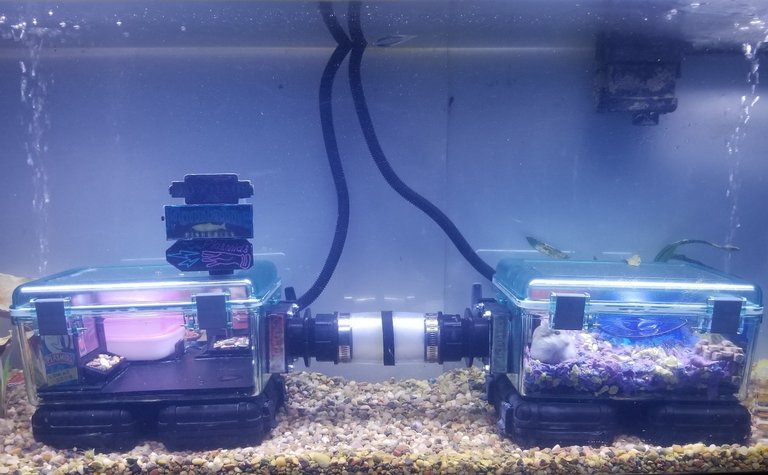 Author’s photo
Author’s photo
Probably you have many questions. I know this because I’ve heard them all, in the course of this project. For example, “How do they get air?” Via an air compressor on the surface sending fresh air down constantly. “What if it fails?” The backup kicks in. “What if there’s a power outage?” Both pumps have independent battery backup.
Then there’s “how do you feed them?” I can either drain the water and open the lids, or decouple them from each other after closing the water tight gates by hand (using hard to see handles in back) to prevent water entering, then bring the modules to the surface. This is also how I clean them out periodically and replenish the water.
Yes, I know it’s cold underwater, the floors are electrically heated. Yes, I know the air will be humid, there are in-line moisture traps to remove humidity from air before it goes down to the habitat modules. I know it’s working because there’s a combination thermometer-hygrometer inside that monitors temperature and humidity.
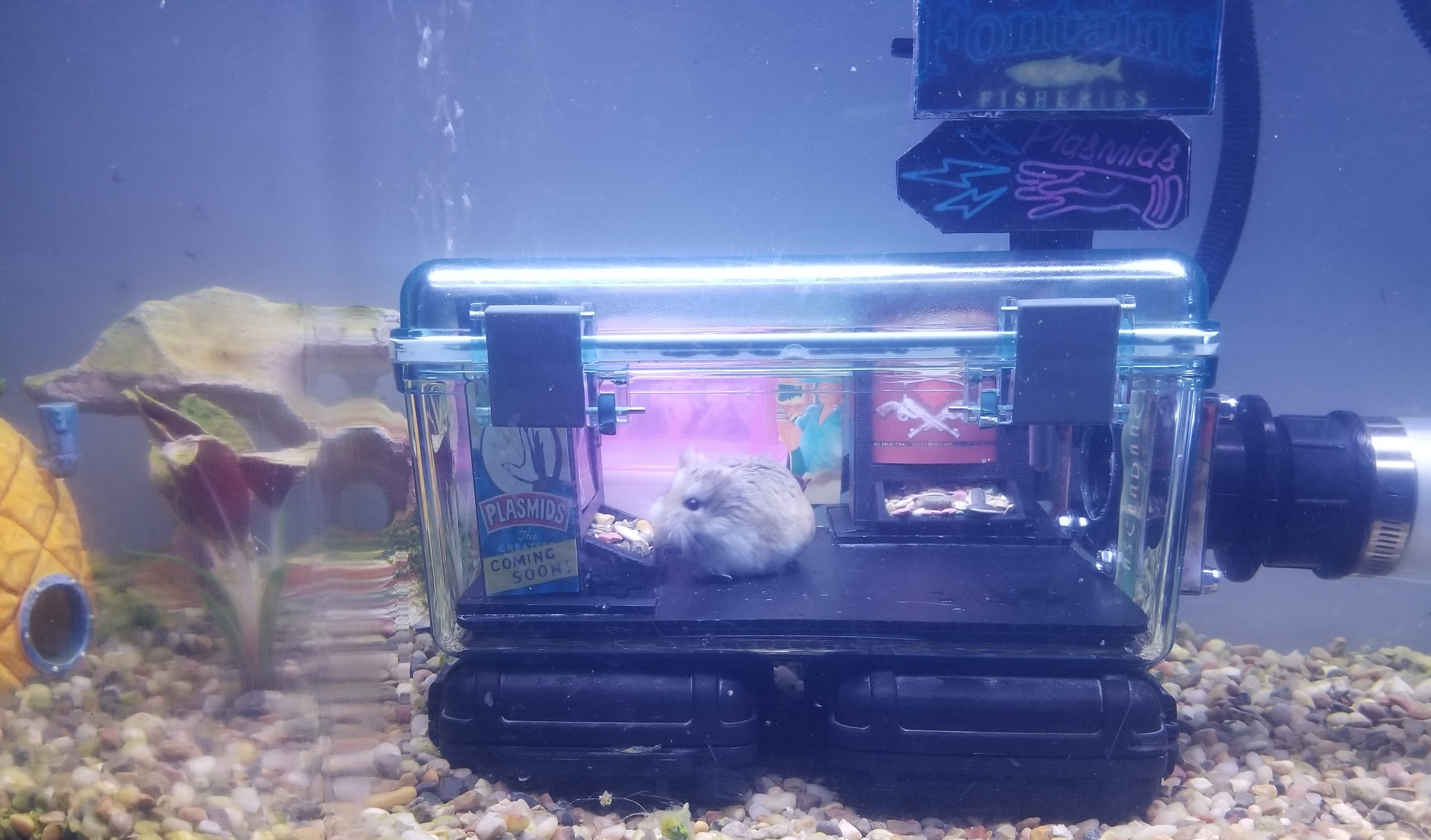
Author’s photo
What’s that? I should add a moisture sensor to each habitat which sounds an alarm if water enters? What a good idea! Such a good idea in fact that I already thought of, and implemented it, many years ago. The idea for this project first occurred to me in 2010, and it took me many months of research before I felt confident I could build anything safe enough to put a living creature into. Consequently, none have drowned.
Can the habitat modules implode? No, they’re what’s known as “positive pressure”, like a diving bell. Not “one atmosphere” like a submarine. Diving bells don’t structurally resist water pressure. They maintain air pressure inside equivalent to or higher than outside water pressure. This is how they can have open hatches in the bottom to enter or exit through without water rising to fill the interior.
Submarines instead maintain one atmosphere of pressure (equivalent to sea level air pressure) inside at all times, using the structural strength of the hull to resist increasing water pressure as depth increases. That’s a very precise, exacting engineering challenge which is why I didn’t do it that way. Positive pressure habitats, conversely, are very easy to build safely, and inherently fault tolerant.
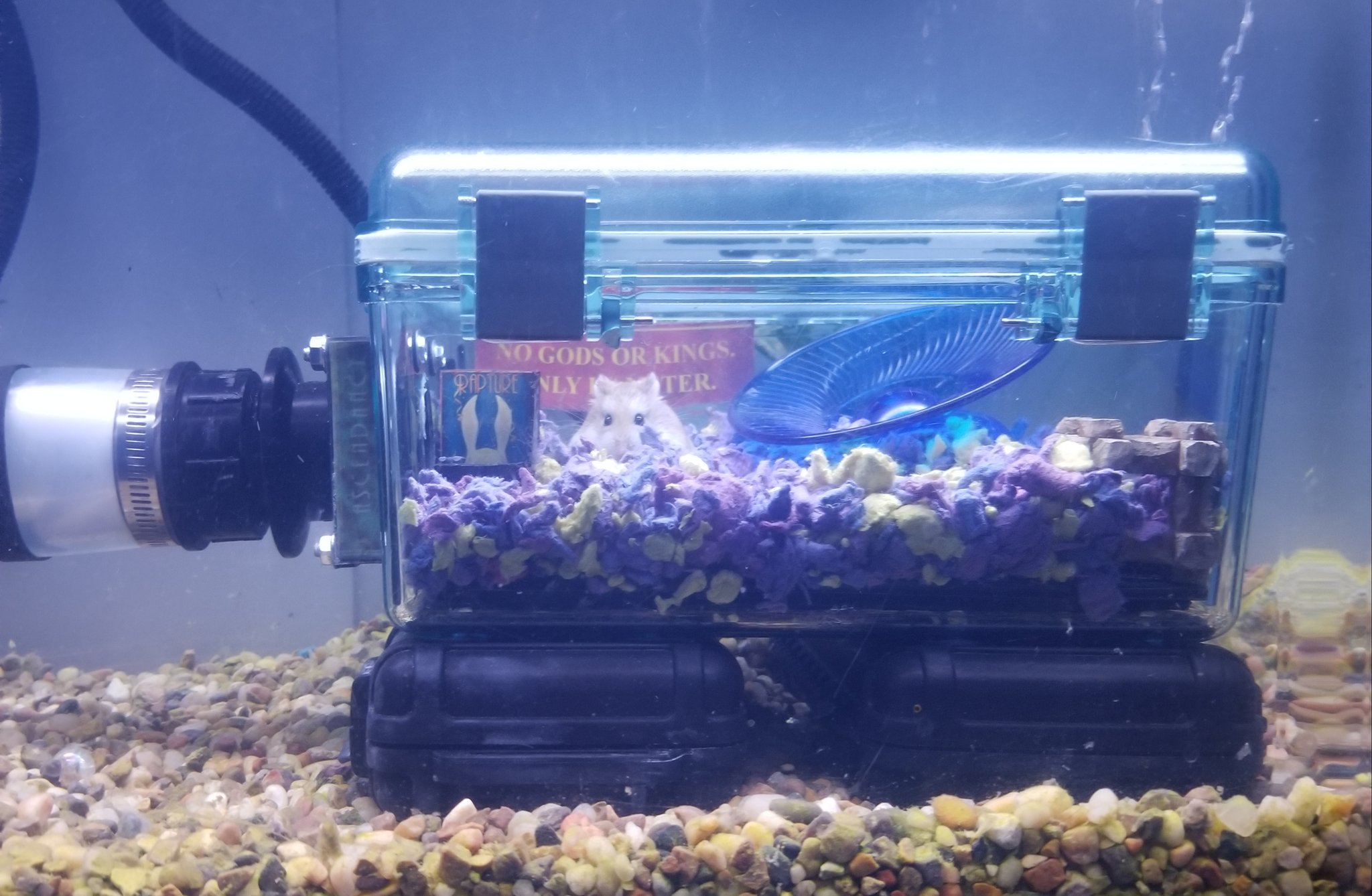
Author’s photo
What I mean by inherently fault tolerant is that the internal atmospheric overpressure does much of the work of preventing water ingress for you. See those bubbles? Many panic at first glance, reasoning “if air can escape, water can enter” which sounds perfectly reasonable despite being totally false.
Water can’t get in through the seal (where the bubbles are escaping through) because it’d have to get past the higher pressure escaping air. As a thought experiment, imagine carrying an inflated balloon underwater. If you allow some air to escape, the balloon decreases in size, but does water enter?
This principle is what makes positive pressure habitats so inherently safe. There’s been about 70 human scale undersea habitats in history, since the mid 1960s. Nobody has ever drowned in one. The only time water entered one, it’s because it tilted severely while being lowered to the seabed (Sealab I). Contrary to that one episode of LOST where Charlie drowns in the Looking Glass habitat, even if a window broke, water would rise only to the top of the window. There’d still be air trapped above that to breathe from.
Author’s photo
Having satisfied you that I am not a maniac, that I take extreme precautions for the safety of my beloved pets and that with correct engineering it is possible to support mammalian life underwater in comfort and safety, we can now discuss how the project began and why I undertook it to begin with.
As you can see in the photo above, I started out using off the shelf products with a very naive idea of how easy it would be. That’s a habitat intended for hermit crabs. I scrapped it almost immediately. Likewise I underestimated how much solar and battery capacity would be needed to do this outdoors.
I began the project because it’s an idea I had as a child watching Rescue Rangers, the Secret of Nimh and from “Down the Tubes”, a level from the original Earthworm Jim for Super Nintendo and Sega Genesis set in (surprise) an underwater hamster colony.
There’s also this experiment performed in 1964 wherein a habitat was submerged with a single wall made of microporous silicone to act as an artificial gill, but I didn’t find out about it until the project was well underway:
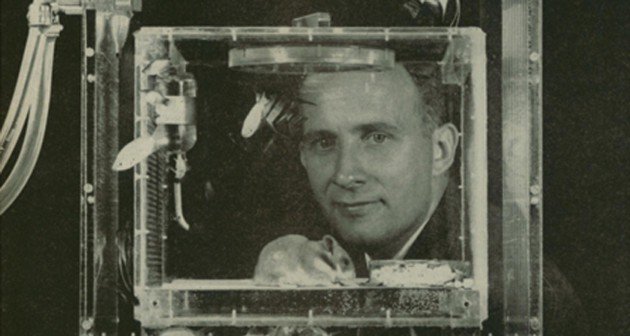
Science News Letter, Nov. 7, 1964
Mostly it was just a fun idea and seemed feasible from an engineering standpoint. I was also very depressed at that stage of life though and simply needed a hobby.
Hampture gave me something to do. Something that would stimulate my mind. A project that I could directly see my labor resulting in progress on, everything coming together a little bit more, day after day.
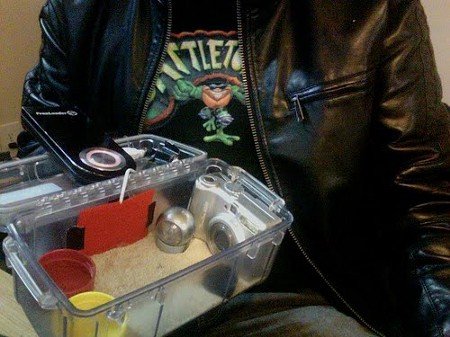
Author’s photo
Before that, each new day seemed identical to the one before it. Projects disrupt this cycle by giving you something by which to identify the passage of time.
I bought a bunch of books about marine engineering and the history of manned undersea habitats, to learn about the engineering principles involved. Pretty soon I had a small one room prototype. Obviously not intended for long duration use, just a proof of concept and test bed.
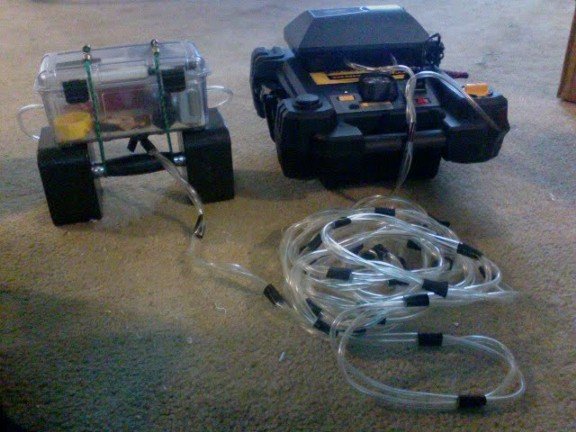
Author’s photo
This prototype was adjustable to either be one atmosphere (hence the air return tube) or positive pressure (accomplished simply by turning a valve in the air return tube to block air so it would need to escape through the habitat lid’s seal). I was unsure at that time which approach I would ultimately commit to and wanted the flexibility to try both.
The compressor was a deep water certified aquarium pump, rated to push air down to a depth of 8 feet. This depth has only been approached twice in the history of the program. The first time was when I tested the 1 atm mode at the bottom of a local public outdoor swimming pool.
After a successful test with no occupant, I proceeded to repeat the test, this time with the hamster inside. I was stopped and questioned during this process by a security guard, but he was so confused, maybe amused, by my explanation that he did nothing to stop me:
Author’s video
The power supply was a portable battery of the type commonly used to jumpstart cars. It could run the pump for about five hours before it started to struggle, as established in unmanned (unhammed?) tests. All habitats, throughout the history of this program, were extensively tested without animals inside first.
The pool test didn’t really contribute any data in this regard since it was very brief (as I wasn’t supposed to be there at that hour, much less submerging a hamster) but it did confirm the operational depth of the air compressor.
1 atm mode worked only to a point. If the pressure needed to cycle stagnant air back up the return tube exceeded outside water pressure at depth, it simply bubbled out through the seal. That’s when I decided to abandon the 1 atm approach moving forward.
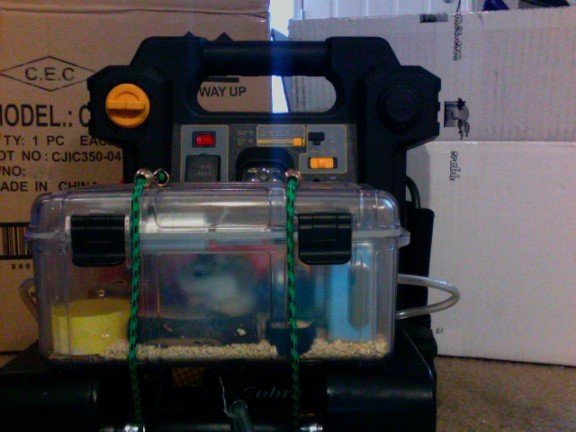
Author’s photo
There’s the little fella inside the contraption. I named him Megafucker Supreme, because it seemed like a history making pioneer should have a suitably epic name. It’s hard to really call this thing a habitat. More of an improvised diving chamber.
It nevertheless had food and water dishes, litter to absorb waste, an LED light, a battery operated resistive heating pad, and a camera. Having tested it extensively in the tub without a hamster inside (then a few times with him in there) eventually I felt confident enough in the design to submerge it in the local man-made lake.
This would be the first test of the habitat (or diving chamber, if you prefer) in a natural body of water. I had many concerns but most involved other people’s curiosity, handled by being physically present the entire time to answer questions and prevent equipment theft:
Author’s video
He seemed much calmer this time, which I attribute to the ambient lighting. It was dark during the pool test. Although hamsters have poor eyesight, ambient light tells them something about their surroundings, information that’s absent in the darkness. The blue LED furnished just enough illumination to film by.
The lake test taught me a few things. Mainly that most bodies of fresh water I might choose to submerge habitats in would have such poor visibility as to make the endeavor nearly pointless as nothing would be visible outside. If I lived by a tropical lagoon, it’d be a different story, but that wasn’t in the budget.
The next step, obviously, was to greatly expand the habitat and to perform another outdoor test. I quickly got to work building a four room habitat where the rooms were all linked by clear acrylic tunnels. They had to be permanently mounted onto the same platform as, at this time, I’d not yet worked out a modular tunnel system that could be connected or disconnected as desired.
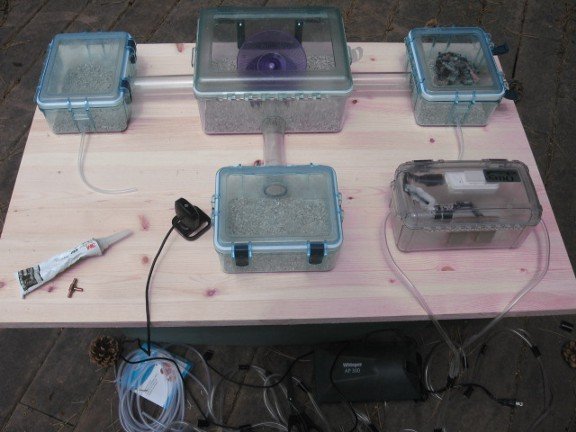
Author’s photo
There’s the original prototype in the lower right for size comparison. Every room got its own dedicated air inlet to prevent the formation of CO2 pockets. There was a webcam inside this time which I could hook up to a laptop on the surface to monitor the main chamber interior in real time.
There was a secondary keychain camera with terrible quality I got for a few bucks off Amazon to stick in one of the 3 smaller modules, just so I could get some shots of hamsters moving from one module to the other. Funding was tight in those days, concessions had to be made.
The top few feet were unseasonably good vis, but the muck collected near the bottom, making outside visibility in this pond about as poor as it had been in the lake. The new 4 module habitat prototype nevertheless performed as expected. I left it overnight and collected it the next morning, this time using an amply oversized battery pack. It was a nontrivial risk, but the location was remote enough that I wasn’t too worried.
What I learned from this test was that if I wanted to go any bigger, I needed a modular tunnel solution. Mounting all the modules permanently to a single platform so the tunnels didn’t flex wasn’t a long term solution, I needed to be able to connect and disconnect modules while submerged without allowing water inside.
This is around when I began to experiment with other habitat designs inside a big transparent tub of water, not having sprung for a proper aquarium yet. There were many configurations I tried out during this period, knowing I wanted more than one module and a clear tunnel, but not yet certain how to implement those features.
Author’s photo
None of these experimental habitats were in use for long periods. Hamsters need a lot more than just warmth, fresh air, water and food. They need an exercise wheel, they love to run run run. They need space, which they get plenty of in their enormous, conventional land cage where they spend their time while not underwater.
They also need wooden chews, and multiple hiding spots. They need nesting fluff to burrow in. Without those things they would quickly accumulate nervous energy with no outlet, and their teeth would become dangerously overgrown.
Taking all this into account, even as I built smaller test habitats to see how specific design features fared in a positive pressure underwater environment, I gradually moved towards conditions that would meet a hamster’s needs. Not just for survival and comfort but also fulfillment.
This meant the ultimate form of the habitat would eventually need nesting fluff, an exercise wheel, wooden chews, at least two hides, heating, dehumidification, a water bottle, food dispensers, a modular waterlock system for connecting them together, and more. This brought an end to the experimental one-off habitat era of development:
Author’s photo
…and refocused the project, going forward, towards the development of a habitat that would combine all the features of the prior prototypes. A tall order! But who better to make it happen than myself? I don’t know of any other comparably qualified underwater hamsterologists in the world.
This refocusing prevented resource waste, as I now had a more or less clear picture of what I meant to build, so I wasn’t building tangential prototypes any longer. It also meant I could move towards longer duration submersions, once all the comfort and happiness boxes were ticked.
The single biggest problem that needed solving was how to connect multiple habitats together in a water tight matter such that I could connect and disconnect them while submerged, without letting water get inside. I ultimately settled on a system where the tube is permitted to flood, purged with compressed air once screwed into place.
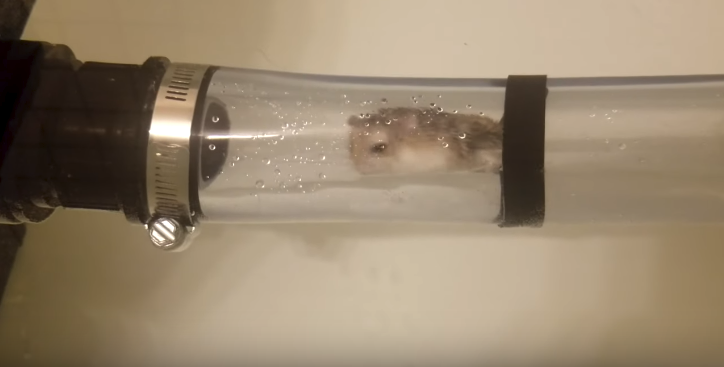
Author’s photo
Tub tests began with no animals, then progressed to involving animals once proven, so I could see how they liked moving through the clear tunnels. I shortened it considerably in the end, for lack of space in the aquarium I’m still using today. The black rubber band covers the holes on the top and bottom where air is pumped in, and displaced water escapes, during purging.
At last, with this hurdle cleared, there was theoretically no limit to how large a submerged habitat complex could be. That is, if I had a nearby body of water to put these habitat modules into. Without one, I’ve been limited to just the space available in the aquarium, which comfortably fits only two habitat modules linked by tunnel.
That more or less is how the project went from a single cramped testbed chamber to the dual module fully apportioned habitat complex it is today, with heated floors, dehumidifiers, nesting fluff, a wheel, moisture sensors/alarms, redundant air pumps, battery backup and all the other design features I added along the way.

Author’s photo
The Bioshock theme is just for funsies. The gravity fed food dispensers are shaped like vending machines, I 3D printed them. Those black cases on the bottom are water tight ballast pods which prevent the lead weights inside (20lbs each!) from contaminating the surrounding water. Hard to believe everything it took, in the end, to make real what I thought would be an easy, fun short term project.
Did I get everything out of it I hoped to? Yes, and more. Besides helping alleviate my depression, a funny thing happened along the way. People took notice of the blog I started to document this process (now abandoned for Patreon). Money started coming in as people who had the same idea as kids, but never the lack of common sense needed to seriously pursue it, wanted to support the internet madman making their childhood dream a reality.
It wasn’t much for a long time. Not even enough to pay for the components. But then a controversial internet personality, Mr. Metokur, took notice and gave this project a shoutout to his enormous fanbase. Funding skyrocketed virtually overnight:
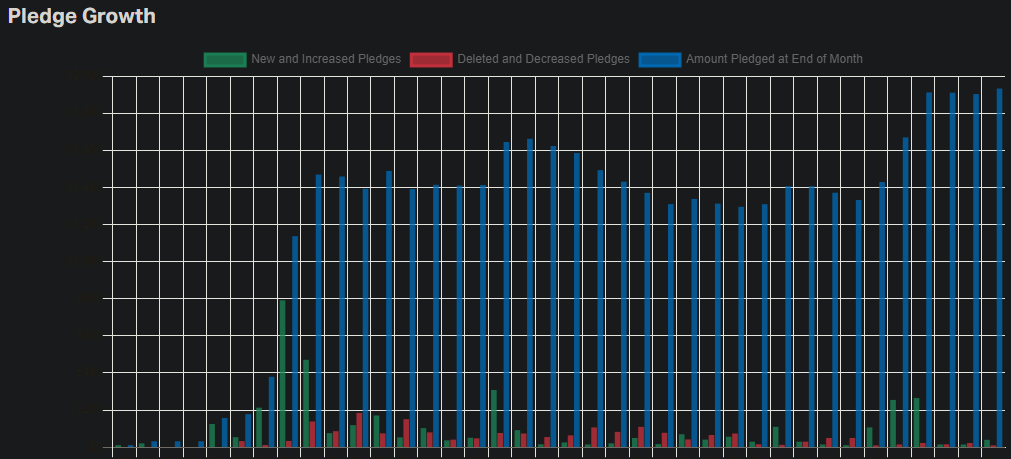
Author’s image
This utterly and abruptly changed my life. With Patreon income added to the ongoing (at that time) Steemit income I could now afford to stop driving for Postmates to make rent. I could upgrade my computer, buy proper cameras instead of the ancient potato tier ones I’d been using until then and more generally fix a lot of stuff I needed for the project which had been broken for a long time. But really, my life was broken too and now I could at last begin to fix it properly.
I’d already bought a car, having profited handsomely from Steemit in its heyday between 2016 and 2018 but now I could afford more than basic liability insurance. I could afford health insurance, at last getting my respiratory problems looked at. It included dental insurance, which I recently came to need as I fractured a tooth and will need a root canal.
After losing my cat Jenny of 15 years back in November, followers helped pay the ruinous end of life expenses, cluing me into the wisdom of insuring my next cat, All Ball. So I have pet insurance now. My equipment is insured as well, I can afford a gym membership, I can eat better, and in all other ways my life has improved.
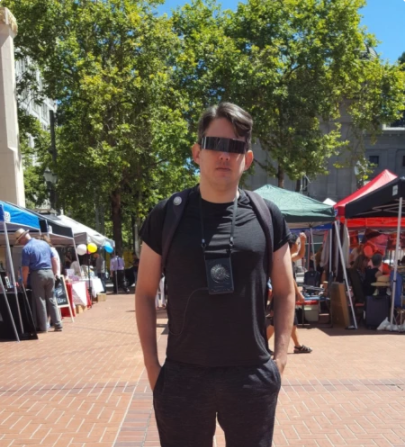
Author’s photo
I worked hard for a long time but was also very lucky. I’d be remiss not to admit the huge role that luck played in all of this. It couldn’t have come at a better time either. As an autistic adult I’m part of a demographic that has a hard time getting and holding down conventional 9 to 5 jobs. Depending which study you trust (the commonly cited 85% figure is from Autism Speaks, ick) around 70–80% of us remain unemployed longterm.
I had a long string of shit jobs prior to this successful project, most of which I lasted less than a year at before they fired me. Two were call centers, a bad fit for an antisocial person but I did a good job according to post-call customer satisfaction surveys, I just had to work around the company provided flowchart in order to achieve that.
This sort of mismatch (or miscommunication) was typical of my sordid work history. I could do a good job, or work within the system as they designed it for us, but not both. All of that’s behind me now, however. I spun this one success off into several others including merchandise, a Youtube channel, a Twitch stream, even an upcoming children’s book and computer game.
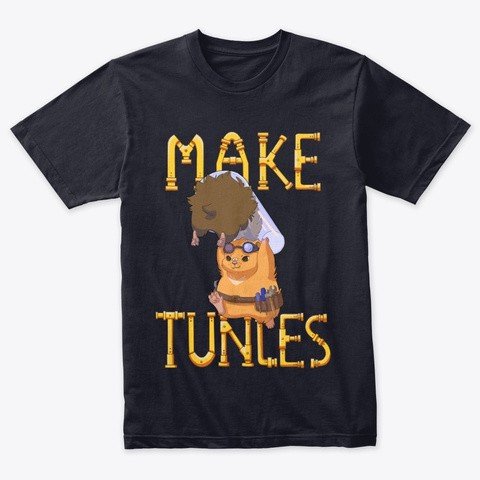

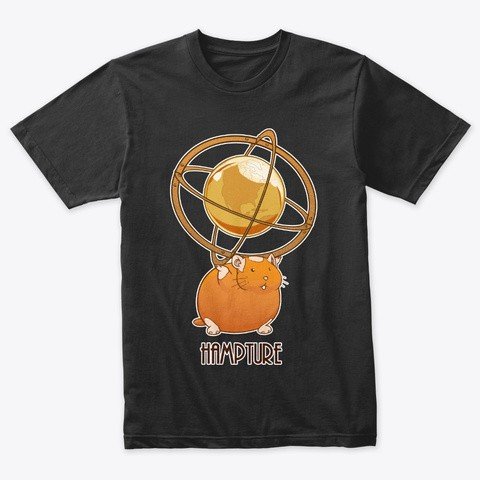


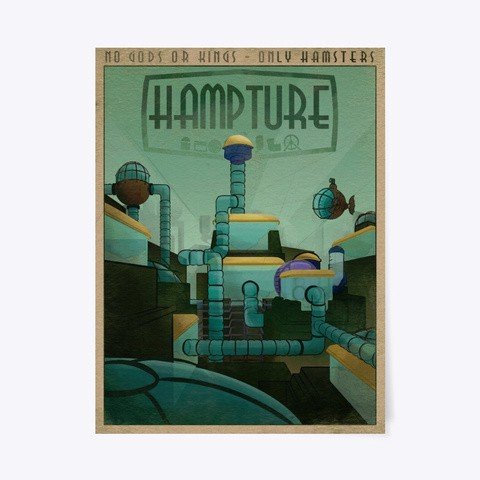
Author’s merchandise
But even as the project attracted positive attention, it also attracted negative attention. It came under fire from a diverse range of internet subcultures such as furries, vegans, and hamster enthusiasts who naturally took one look at cute hamsters in seemingly dangerous underwater enclosures and assumed the worst.
Having learned to support mammals comfortably and safely underwater, something my autism arguably makes me well suited for, I would now have to learn how to manage large nebulous internet mobs of angry mammals, something I’d argue that same autism made me especially terrible at.
Even within the subset of negative reactions I’ve gotten, the range of different takes and especially reactions to disclosure of my neurodivergence have been very interesting, and telling. But that’s a matter for a different article. I’m satisfied I’ve brought you up to speed with the project, such as it is now. Stay tuned for further articles on this topic, if there seems to be sufficient interest.
All the links to my Twitch, Youtube, merch and everything else can be found right here. Consider supporting me on my Patreon if this is the kind of creative weirdness you’d like to see more of in the world.
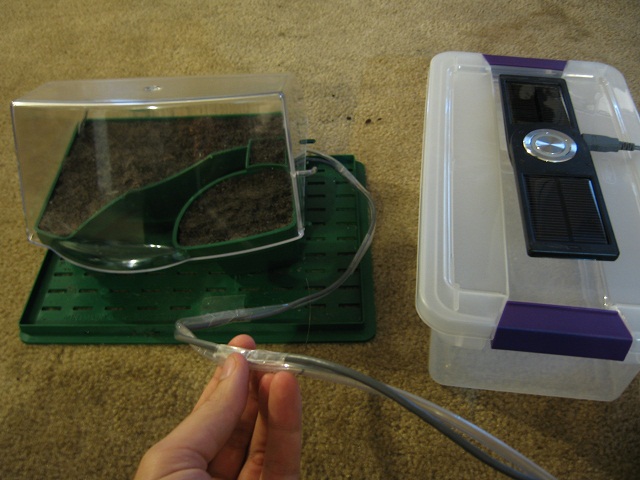
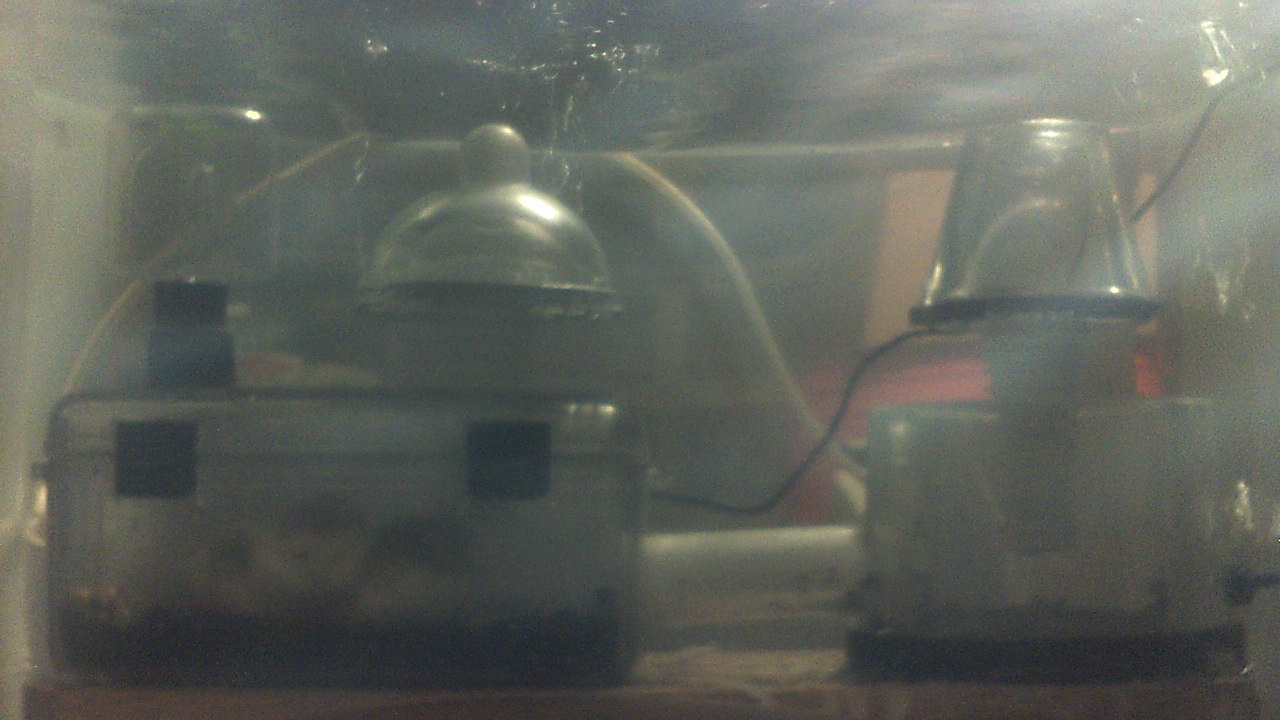
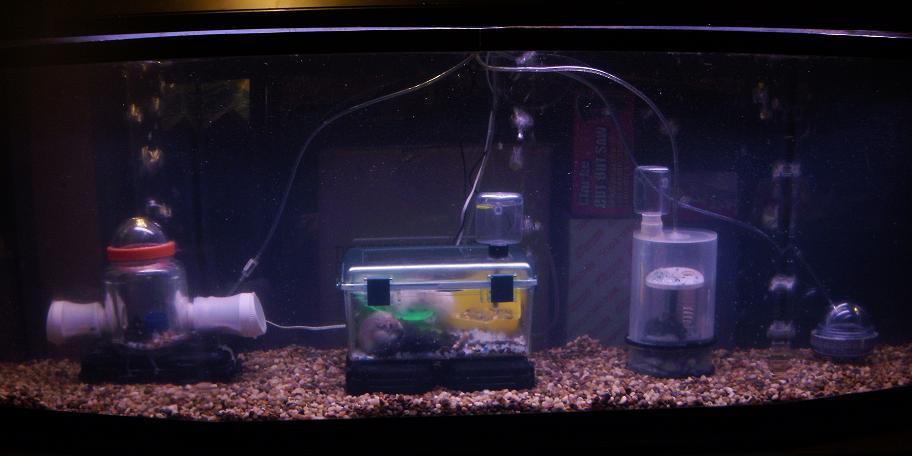
I could've lived 100 lifetimes without thinking to do this.
I'm not sure if that's a compliment or not; but I respect the work you put in; I'm glad it helped your state of mind, and I found it fascinating to read.
What's next? Is there a next?
That'll be in the next article on this topic.
Pretty awesome read ! It's quite a strange project but I love the dedication and focus on making the hamsters safe.
Quick question, you mentioned that the current aquarium can only support two modules, why can't you stack the modules ? I guess the tubes would need to be reworked to allow them to go upwards but then you could have double the modules in the same space.
I would then also have to double the amount of ballast weight and add LED illumination on the lower floors. It's feasible but would require a near total rebuild.
Challenging, isn't it?
Why not make a project proposal to fund it? I'm ready to support it.
What, like for government or university funding? Do you think that would work?
He means the decentralized hive fund: https://peakd.com/me/proposals
I don't know, but it might be worth a try
Why not start here with the DHF (Hive Fund)?
Sounds promising. Is there a guide to it somewhere I could read?
Morally extremely questionable.
In what way?
Is it that they're underwater you disagree with, or that they're in captivity?
My jaw was hanging open reading this...
I've never seen a post quite like it!
Or even remotely like it...
Wow, how awesome the steps and how you managed to built those habitats. It's great (but a shame you have to do it lol) that you cleared up all these burning questions many people would have after reading it. It's clear you take care of your little pets and wouldn't risk harming them.
Curious to see your next post :)
Love it. Hamsters in space next!!
Also, you should play the hamster dance loop on one of the feeds.. just sayin..
Many do not realize 25 rats were already sent to the ISS in a specialized rodent habitat to study the gestation of their young in microgravity: https://spaceflight101.com/iss/rodent-habitat/#:~:text=The%20Rodent%20Habitat%20itself%20is,ascent%20aboard%20the%20SpaceX%20Dragon.
Yes. I would also love to see a collaboration with Elon Musk here...Lol
Hamsterologist! That’s a nice one. Looking forward to the future updates
This is epic. So very cool. I also loved watching Rescue Rangers as a kid. I'm sure I had some similar ideas back then with my adolescent creative mind....wonder where that went?
Nice work man.
You are doing this because you plan on living under the sea?
Yes, eventually I want to build a human scale habitat. I already used these principles to build a surface supplied diving helmet, which I wrote an article on ages ago.
Can I be your roommate? this sounds amazing, I would love to live underwater, most the time I feel buried living on land so it sounds promising.
This is a brilliant hobby, thanks for writing it down!
Fuck yeah! What an awesome project and a hell of a journey.
It is a very interesting project, the important thing is the safety of the animals and from there many studies can be done.
LOL! What a weird idea :D
Soon they wil start making their own berets. This is awesome.
Your attention to details, I think, is great. I get the sense of how methodical you have been with the project, rather than in a rush to get results.
Love this!
Nice Battletoads shirt!
Keep being you mate, the haters are just ignorant
This is really cool, I can only imagine how awesome it is to be inside your mind, you're smart. I am impressed by your story, autism and struggling financially haven't stopped you to be the internet madman making their childhood dream a reality.. I congratulate you! Also... Pet insurance? That is cool, never knew it existed.
You know what I imagine? How would it be if you could build an entire maze underwater, where the little ones could walk around, like in a gigantic invisible space station. RodentX, the future is under. Random thought in my mind lol.
Workin on it. Next step is Megahab, a 2 story habitat roughly 3x the interior volume of one of the current modules. The idea is to eventually have a huge network of them in a pool, pond or lake.
I guess I enjoy being in my mind, but I have no theory of mind and as such can't compare it to anything, so I suspect this might be a "grass is always greener" situation. NTs have the enviable natural ability to network into cooperative social superorganisms, functionally expanding themselves into/across their peers which behave as intermittent cognitive and emotional resources. That capability is what got humanity to where it is today, aspies are just along for the ride, one of nature's experiments. Time will tell if the human mind in empathic isolation from others, relentlessly and recursively investing into itself rather than connections with peers, is a better survival strategy for the coming century.
Incidentally I see you have a Twitter but are you on Medium? It's a paid blogging platform like Hive but it pays in USD directly. It has been quite lucrative for me as a place to "double dip"; I just copy over my Hive articles as I finish them. There's a $50 annual fee for the partner program (required to monetize articles) but I made that back within the first month. It took three years of banging away at it before it started to pay big money though, so be warned. Still there's hardly any reason not to, if you're already writing regularly for Hive.
Time will tell if the human mind in empathic isolation from others, relentlessly and recursively investing into itself rather than connections with peers, is a better survival strategy for the coming century.
This will be interesting to watch. We are social creatures but indeed studies have shown that creativity and inovation need solitude.
Thank you for the information, I will check it out, cheers😀
"Hampture" sold it for me.
Hah this is one of the best blog posts ever. I had no idea you were up to this, but with some of your recent posts, it makes sense :)
I gotta be me
Best hamster post ever.
Oh man I'm glad to see you are doing well nowadays. You're such an awesome person, always creating these amazing things, be it short storries, some engineering project or even the gameplay VR series were super fun to watch. Don't let the angry internet mobs get to you, you may think you were very lucky but you do create awesome things, so naturally people will like them. :)
I appreciate your supportive words very much
Die Hamster haben sich wohl aus dem Weltall zurückgezogen und erkunden jetzt erstmal den Ozean. ;-) @alucian
Ja, die haben sich eben weiter entwickelt und unterwandern die Weltherrschaft nun aus dem nass. Leider wurde ich hier ja geleakt. :-) Aber das war auch schon mit einkalkuliert. :.-)
This is odd, but well presented and strangely fascinating.
What an interesting hobby, but super cool as well.
Holy shit I saw a Mister Metokur video about you, and it was surprisingly interesting. Glad to see you make it over to Hive, and I'm glad your little journey has turned into such a dream come true.
I've been on Hive since it began. I jumped ship from Steemit after the change of ownership, but before that I was also on Steemit since 2016, more or less when it began. It's been an interesting ride for sure.
Nice! I had no idea. Did you know about that video? I'm pretty sure between bitchute, youtube, and all the mirrors, that video was probably seen almost a million times.
Yes, I've been aware of that video.
Congratulations @alexbeyman! You received a personal badge!
You can view your badges on your board and compare yourself to others in the Ranking
Interesting and informative!
The rewards earned on this comment will go directly to the person sharing the post on Twitter as long as they are registered with @poshtoken. Sign up at https://hiveposh.com.
I WANT A TEE SHIRT!!! AND STICKERS!!
Can you make a hive account plz for your underwater hamster
Amazing!
Welp, you've done it
Create the most positively unique content on Hive
Great stuff
Lol. What an image. A hamster with a little SCUBA set